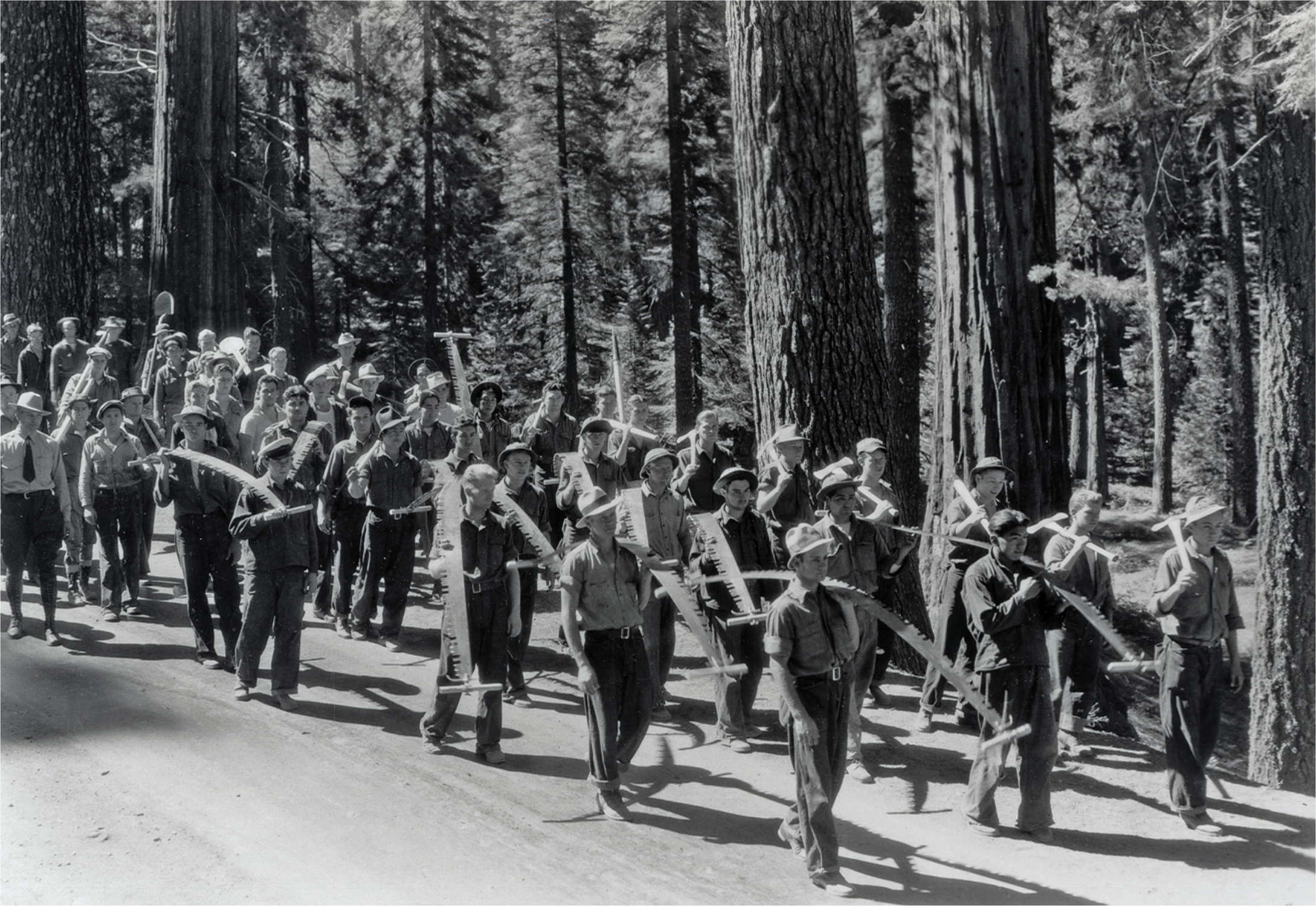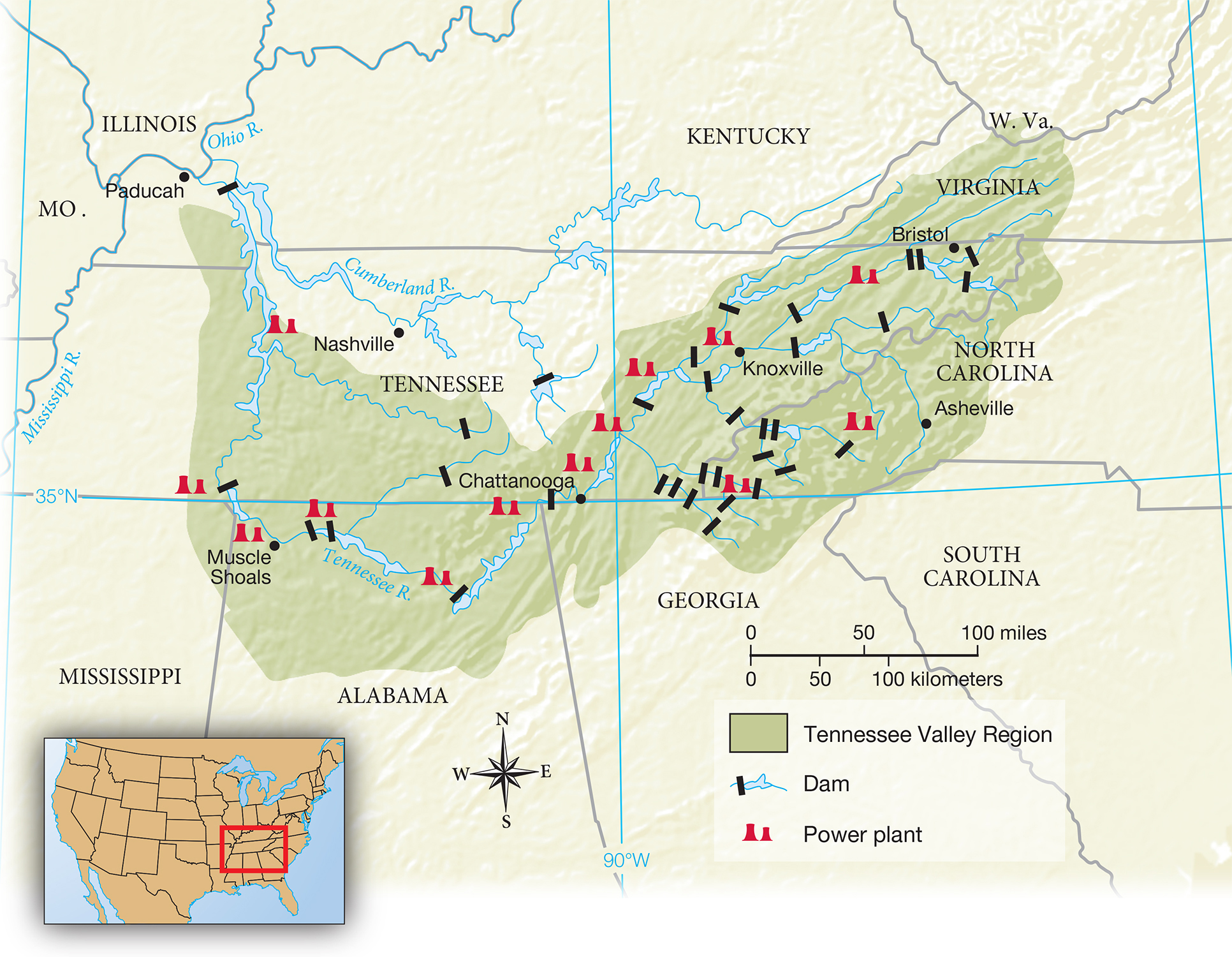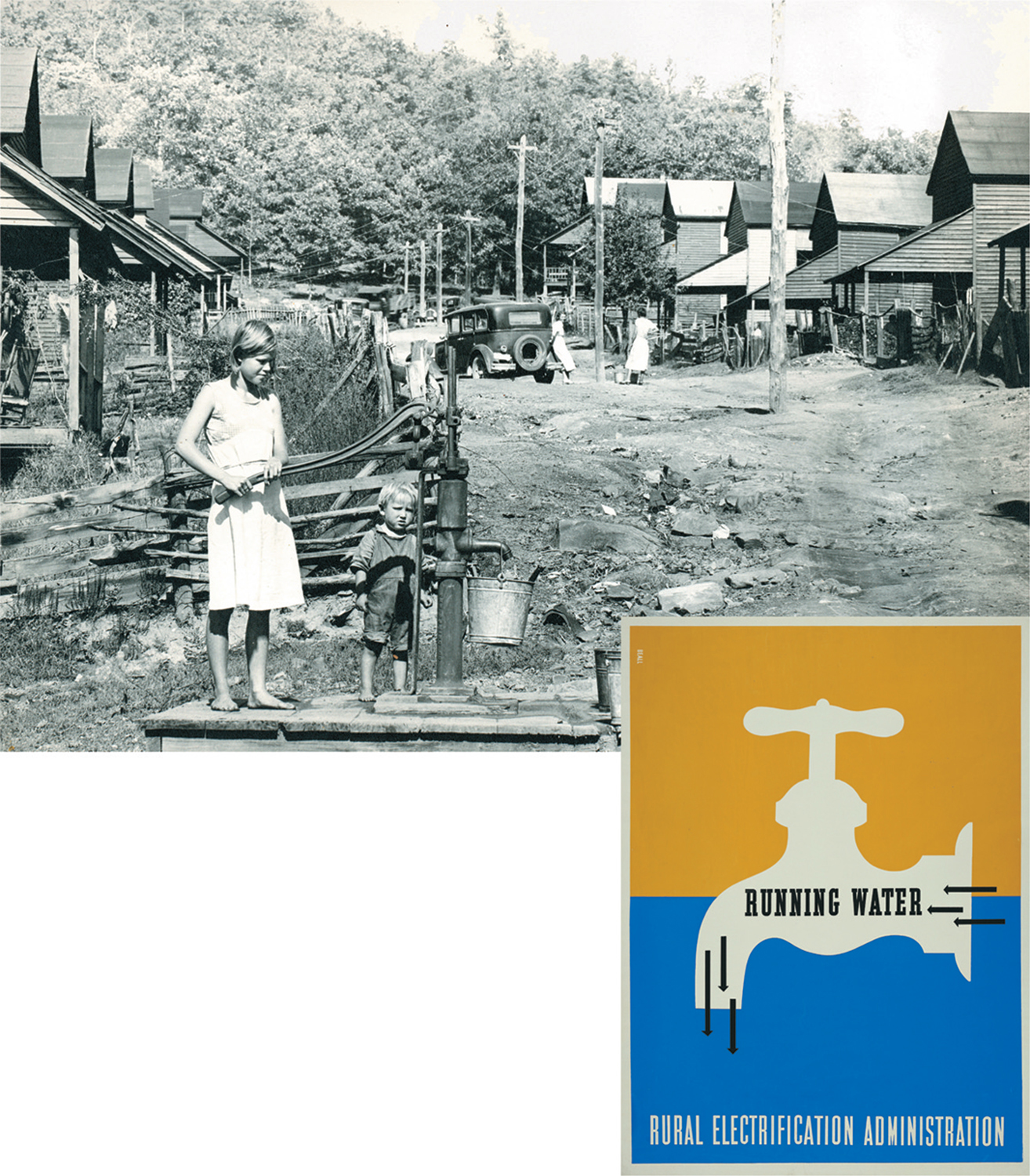Relief and Conservation Programs
Patching the nation’s financial structure provided little relief for the hungry and unemployed. A poor man from Nebraska asked Eleanor Roosevelt “if the folk who was borned here in America . . . are this Forgotten Man, the President had in mind, [and] if we are this Forgotten Man then we are still Forgotten.” Since its founding, the federal government had never assumed responsibility for needy people, except in moments of natural disaster or emergencies such as the Civil War. Instead, churches, private charities, county and municipal governments, and occasionally states assumed the burden of poor relief, usually with meager payments. The depression necessitated unprecedented federal relief efforts, according to New Dealers. As a New Yorker who still had a job wrote the government, “We work, ten hours a day for six days. In the grime and dirt of a nation [for] . . . low pay [making us] . . . slaves—slaves of the depression!”
The Federal Emergency Relief Administration (FERA), established in May 1933, supported four million to five million households with $20 or $30 a month. FERA also created jobs for the unemployed on thousands of public works projects, organized into the Civil Works Administration (CWA), which put paychecks worth more than $800 million into the hands of previously jobless workers. Earning wages between 40 and 60 cents an hour, laborers renovated schools, dug sewers, and rebuilt roads and bridges.

Civil Conservation Corps (CCC) During the New Deal, the CCC provided work and wages for about two-and-a-half million young men to improve parks, build roads, plant trees, and engage in other conservation projects. CCC workers earned wages of about $30 a month, all but $5 of which went to their parents. Everett Collection.
The most popular work relief program was the Civilian Conservation Corps (CCC), established in March 1933. It offered unemployed young men a chance to earn wages while working to conserve natural resources, a long-standing interest of Roosevelt. Women were excluded from working in the CCC until Eleanor Roosevelt demanded that a token number of young women be hired. By the end of the program in 1942, three million CCC workers had left a legacy of vast new recreation areas, along with roads that made those areas accessible to millions of Americans. Just as important, the CCC, CWA, and other work relief efforts replaced the stigma of welfare with the dignity of jobs. As one woman said about her husband’s work relief job, “We aren’t on relief anymore. My husband is working for the Government.”
The New Deal’s most ambitious and controversial natural resources development project was the Tennessee Valley Authority (TVA),created in May 1933 to build dams along the Tennessee River to supply impoverished rural communities with cheap electricity (Map 24.3). The TVA set out to demonstrate that a partnership between the federal government and local residents could overcome the barriers of state governments and private enterprises to make efficient use of abundant natural resources and break the ancient cycle of poverty. The TVA improved the lives of millions in the region with electric power, flood protection, soil reclamation, and jobs.

MAP ACTIVITY Map 24.3 The Tennessee Valley Authority The New Deal created the Tennessee Valley Authority to modernize a vast impoverished region with hydroelectric power dams and, at the same time, to reclaim eroded land and preserve old folkways. READING THE MAP: How many states were affected by the TVA? How many miles of rivers (approximately) were affected? CONNECTIONS: What kinds of benefits—economic as well as social and cultural—did TVA programs bring to the region? How might the lives of a poor farming family in Alabama or Tennessee have changed after the mid-1930s owing to these programs?
New sources of hydroelectric power helped the New Deal bring the wonders of electricity to country folk, fulfilling an old progressive dream. When Roosevelt became president, 90 percent of rural Americans lacked electricity. Private electric companies refused to build transmission lines into the sparsely settled countryside when they had a profitable market in more accessible and densely populated urban areas. Beginning in 1935, the Rural Electrification Administration (REA) made low-cost loans available to local cooperatives for power plants and transmission lines to serve rural communities. Within ten years, the REA delivered electricity to nine out of ten farms, giving rural Americans access for the first time to modern conveniences that urban people had enjoyed for decades.

VISUAL ACTIVITY Rural Electrification and Running Water New Deal programs brought electricity and running water for the first time to many rural families, like those shown here in east-central Tennessee. The Tennessee Valley Authority and Rural Electrification Administration helped families in this and many other villages replace kerosene lamps with electric lights and to have access to clean, safe water. Pump: FDR Library; poster: Lester Beall, Running Water-Rural Electriciation Administration, 1937. Gift of the Artist. Digital Image © The Museum of Modern Art/Licensed by SCALA/Art Resource, NY. © VAGA, NY. READING THE IMAGE: Where can you see evidence of New Deal benefits in this photo? What difference did electricity and running water make in the lives of people like the children depicted here at the pump? CONNECTIONS: Why did New Deal programs devote so much attention to improving the lives of rural Americans?


